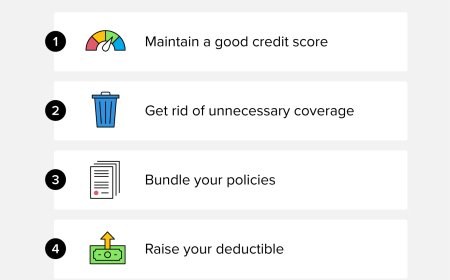How to Apply for Divorce in Canada Step by Step
Introduction Applying for divorce in Canada is a significant legal process that requires careful understanding of the steps involved, legal requirements, and procedural nuances. Whether you are contemplating divorce due to marital discord, separation, or other personal reasons, knowing how to navigate the application process efficiently is essential. This comprehensive guide aims to provide clear,
Introduction
Applying for divorce in Canada is a significant legal process that requires careful understanding of the steps involved, legal requirements, and procedural nuances. Whether you are contemplating divorce due to marital discord, separation, or other personal reasons, knowing how to navigate the application process efficiently is essential. This comprehensive guide aims to provide clear, step-by-step instructions on how to apply for divorce in Canada, ensuring that individuals can approach this legal journey with confidence and clarity. Understanding the importance of a structured approach not only simplifies the process but also helps in avoiding common pitfalls and delays, ultimately leading to a smoother transition towards a new chapter in life.
Step-by-Step Guide
Step 1: Determine Eligibility for Divorce
Before initiating the divorce process, confirm that you meet the basic eligibility criteria established by Canadian law. Generally, you must be a resident of Canada or have lived in Canada for at least one year prior to filing. Additionally, the grounds for divorce typically include marriage breakdown, which can be demonstrated through separation for at least one year.
Step 2: Decide on the Type of Divorce
Canada recognizes two main types of divorce applications:
- Uncontested Divorce: When both spouses agree on all terms, including property division, child custody, and support.
- Contested Divorce: When spouses disagree on one or more issues, requiring court intervention.
Choosing the appropriate type depends on your specific circumstances and preferences.
Step 3: Prepare Necessary Documents
Gather essential documents such as:
- Marriage certificate
- Proof of separation (e.g., separation agreement or affidavits)
- Financial statements and income details
- Details of children and custody arrangements (if applicable)
Having these documents ready facilitates a smoother application process.
Step 4: Complete the Divorce Application Forms
Download and fill out the appropriate forms from the federal or provincial court websites. The main form is usually called "Application for Divorce" or similar. Ensure accuracy and completeness, as errors can lead to delays.
Step 5: File the Divorce Application
File your completed application with the court clerk in the appropriate jurisdiction. Pay the required filing fees, and retain copies of all submitted documents for your records.
Step 6: Serve the Divorce Papers
Legally deliver a copy of the divorce application to your spouse, following the rules of service outlined by the court. Proper service ensures that your spouse is informed and has an opportunity to respond.
Step 7: Await Response and Proceed
If your spouse agrees to the divorce and all terms, the process can move forward to a simplified or uncontested hearing. If there are disputes, the case may proceed to court for resolution.
Step 8: Attend the Court Hearing
Attend the hearing scheduled by the court. Present your case, provide necessary evidence, and answer any questions. The judge will review the application and make a decision.
Step 9: Obtain the Divorce Decree
If the court approves your application, you will receive a divorce decree or judgment. This legal document confirms the end of the marriage and allows you to move forward with legal clarity.
Best Practices
To ensure a smooth and efficient divorce application process, consider the following best practices:
- Seek Legal Advice: Consulting with a family law attorney can help clarify complex issues and ensure your rights are protected.
- Maintain Organized Records: Keep all documents, correspondence, and court papers systematically organized.
- Focus on Child Welfare: Prioritize the best interests of any children involved, especially regarding custody and support arrangements.
- Communicate Clearly: Open and respectful communication with your spouse can facilitate uncontested divorce proceedings.
- Understand Local Laws: Be aware of specific provincial or territorial regulations that may affect your divorce process.
Tools and Resources
Several tools and resources are available to assist in the divorce process in Canada:
- Government Websites: Access official forms and procedural guides from federal and provincial courts.
- Legal Aid Services: Obtain legal support if you qualify financially.
- Online Document Preparation Services: Use reputable platforms to help fill out legal forms accurately.
- Family Law Guides: Read comprehensive guides published by government agencies or legal organizations.
- Support Groups and Counselling: Seek emotional support during this challenging period.
Real Examples
Example 1: Uncontested Divorce in Ontario
Jane and Mark have been separated for over a year and agree on all issues. Jane files an uncontested divorce application online through the Ontario Superior Court's portal, submits the requisite documents, and serves Mark. After a court review, the divorce is granted without a court appearance.
Example 2: Contested Divorce in British Columbia
Alex and Taylor are unable to agree on child custody and property division. They file separate applications, and the case proceeds to court. Both parties present evidence and arguments, and the judge makes a ruling based on the best interests of the children and equitable distribution of assets.
FAQs
Q1: How long does the divorce process typically take in Canada?
The process duration varies depending on whether the divorce is uncontested or contested. An uncontested divorce can be finalized in approximately 4 to 6 months, while contested cases may take longer, sometimes over a year.
Q2: Do I need a lawyer to apply for divorce?
While legal representation is not mandatory, consulting a lawyer can help ensure all legal requirements are met and protect your interests, especially in complex cases.
Q3: Can I get a divorce if my spouse is not responding?
Yes, you can proceed with a sole application and seek a default judgment if your spouse does not respond within the stipulated timeframe.
Q4: What if I want to change my divorce agreement later?
You can file a motion to modify the divorce order or custody arrangements if circumstances change significantly.
Conclusion
Applying for divorce in Canada involves a series of clearly defined steps that, when followed carefully, can lead to a smooth legal separation process. Understanding eligibility requirements, preparing the necessary documents, and adhering to court procedures are vital components. By leveraging available resources, seeking appropriate legal advice, and maintaining organized records, individuals can navigate the complexities of divorce with confidence. Remember, each case is unique, so tailored guidance from legal professionals can make a significant difference. Ultimately, a well-informed approach ensures that your rights are protected and that the process concludes efficiently, paving the way for a new beginning.































